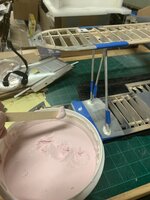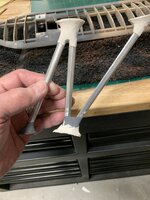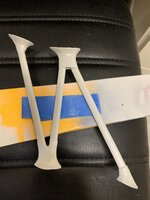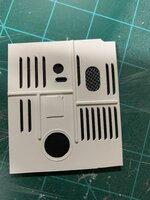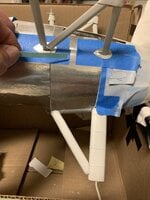- Thread starter
- #121
Skyediamonds
Staff Sergeant
- 1,362
- May 26, 2018
Continuing on:
After the wax paper was laid over the wing & taped down, the blue masking tapes with the base of the fairing cutouts were then laid down on either side of the strut -making sure the cutout matched.
Once everything was in place, I poured a resin mix. Resin was used at the base to ensure a strong fairing-to-wing join.
Before the resin started to cure, I quickly peeled back the masking tapes, making sure that none of the resin spilled over.
After the wax paper was laid over the wing & taped down, the blue masking tapes with the base of the fairing cutouts were then laid down on either side of the strut -making sure the cutout matched.
Once everything was in place, I poured a resin mix. Resin was used at the base to ensure a strong fairing-to-wing join.
Before the resin started to cure, I quickly peeled back the masking tapes, making sure that none of the resin spilled over.









